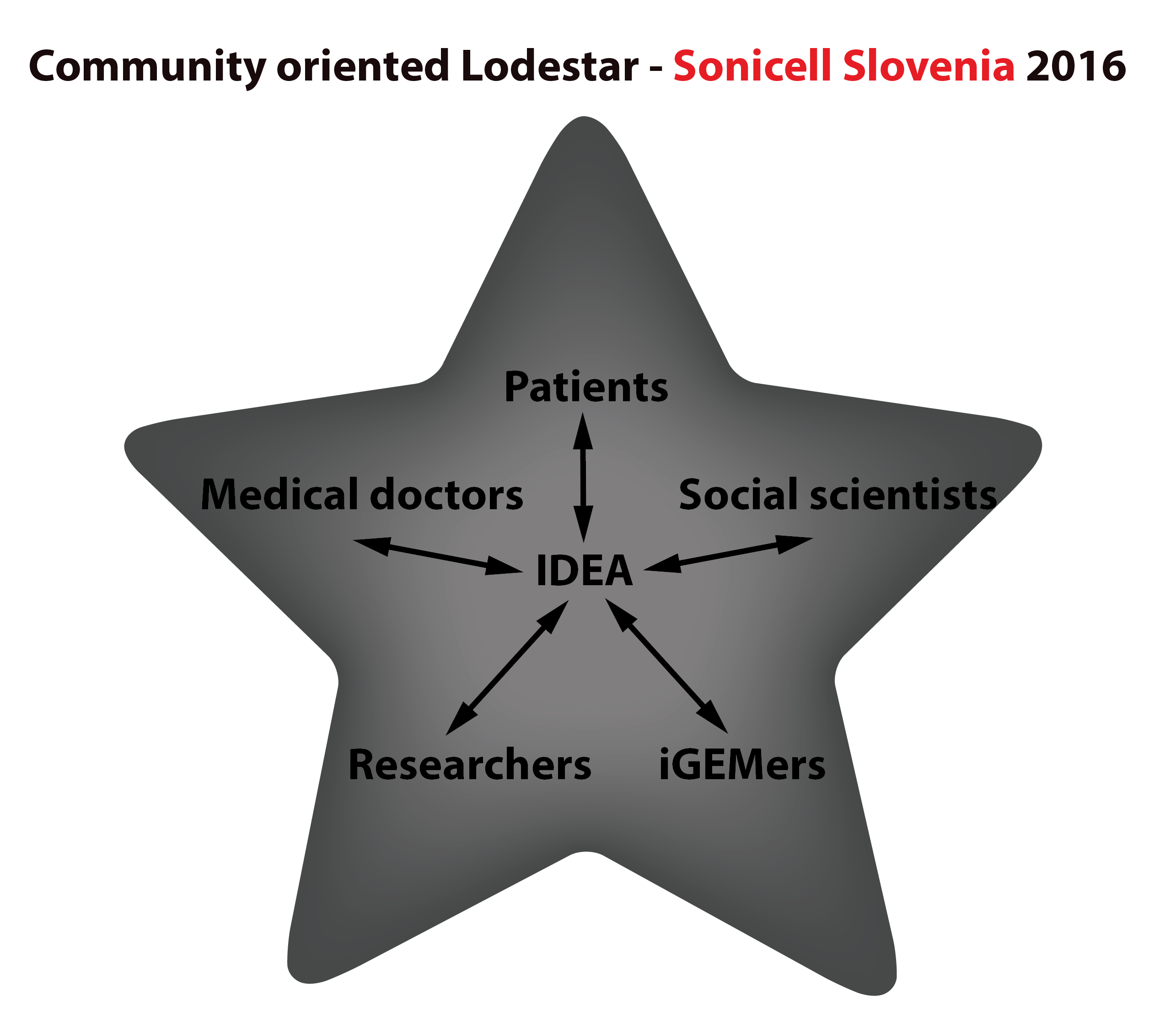NinaJerala (Talk | contribs) |
(Undo revision 383477 by NinaJerala (talk)) |
||
| Line 124: | Line 124: | ||
</div> \ | </div> \ | ||
<p style="text-align:justify">Researchers are scientist concerned with the basic idea of the project, with the possibility of execution of it, with the proof of the concept - in short, people who advise if the effort is even feasible/worth it. They do not need to necessarily be synthetic biologists as the teams are encouraged to search among other fields as well. Medical doctors, mechanical and electrical engineers, biologists, biotechnologists, (bio)chemists, computer scientists and many others have great and important ideas and considerations to contribute to the field. \ | <p style="text-align:justify">Researchers are scientist concerned with the basic idea of the project, with the possibility of execution of it, with the proof of the concept - in short, people who advise if the effort is even feasible/worth it. They do not need to necessarily be synthetic biologists as the teams are encouraged to search among other fields as well. Medical doctors, mechanical and electrical engineers, biologists, biotechnologists, (bio)chemists, computer scientists and many others have great and important ideas and considerations to contribute to the field. \ | ||
| − | With the aim of designing foundational technology that could be some day applied to treatment of disease such as the Parkinson’s disease and diabetes we searched for appropriate experts in the field. We consulted prof. dr. Marko Živin, MD who deals with damage, plasticity and regeneration of nerves and muscles and his junior researcher, Kaja Kolmarič. They were extremely receptive to our idea of threating neurological disease with release of therapeutic protein from patient’s own cells, but suggested that optogenetic approach might be too invasive for an organ as sensitive and crucial as the brain, while chemical inducers of dimerization might have many side effects. It was their own research with ultrasound that inspired us and led to a shift in the emphasis of our project and resulted in ultrasound stimulation (US) becoming the focus of it. After exposure to the ideas on the potential use of ultrasound, team members returned to the drawing board and each came up with a project idea mainly tailored to ultrasound stimulation but still incorporating our <a href="https://2016.igem.org/Team:Slovenia/Notebook/Proposals">initial idea of fast response</a> <a href = "#fig3">Figure 1</a>. | + | With the aim of designing foundational technology that could be some day applied to treatment of disease such as the Parkinson’s disease and diabetes we searched for appropriate experts in the field. We consulted prof. dr. Marko Živin, MD who deals with damage, plasticity and regeneration of nerves and muscles and his junior researcher, Kaja Kolmarič. They were extremely receptive to our idea of threating neurological disease with release of therapeutic protein from patient’s own cells, but suggested that optogenetic approach might be too invasive for an organ as sensitive and crucial as the brain, while chemical inducers of dimerization might have many side effects. It was their own research with ultrasound that inspired us and led to a shift in the emphasis of our project and resulted in ultrasound stimulation (US) becoming the focus of it. After exposure to the ideas on the potential use of ultrasound, team members returned to the drawing board and each came up with a project idea mainly tailored to ultrasound stimulation but still incorporating our <a href="https://2016.igem.org/Team:Slovenia/Notebook/Proposals">initial idea of fast response</a> <a href = "#fig3">Figure 1</a>. </p><p style = "clear:both;"></p> '; |
| − | + | ||
| − | + | ||
| − | + | ||
| − | + | ||
| − | + | ||
| − | + | ||
| − | + | ||
| − | + | ||
| − | + | ||
myId.data = "researches"; | myId.data = "researches"; | ||
} | } | ||
Revision as of 12:26, 19 October 2016
Integrated Practices
Various extraordinary synthetic biology projects can be depicted as boats and ships, seeking the safety of a harbor in the wide ocean, their main purpose finding the final destination.
No matter how different or fascinating the boat is, its main purpose is to safely arrive to the harbor. Before there were modern GPS systems, sailors had to rely on using natural events and signs. One of the main was the lodestar, the most shining star, which is always a good orientation point.
Similarly, many research projects can struggle no matter how fascinating they are. They might lose the feeling of reality and just travel for the sake of travel.
In order to give the right coordinates, which showed to be of high importance in our case, we developed a new symbol for future iGEM teams who might apply their projects to the medical field – community oriented lodestar. No matter if the team is competing in the foundational advance or medical application section, maximization of benefit to society should be the number one priority.

For content click on THE star
Consequently, if ever lost, teams should just find the shining star and orient in respect to it. By thorough discussions and careful implementation of ideas
provided by all the participants involved in dialogue, iGEM team should be able to present at the Giant Jamboree the most of the project –completely analyzed project
in real life. It’s not only the idea that influences the minds and thinking of individuals involved, but the relationship is reciprocal. The people involved have a great
deal of influence over the idea itself as well. The concept will be explained on our example. While we are competing in the foundational advance track we have considered
many possible medical applications of our project, particularly diabetes, Parkinson’s disease and hemorrhagic diseases, since medicine is the field of study of several
students and other students and mentors have a soft spot for this direction. .



